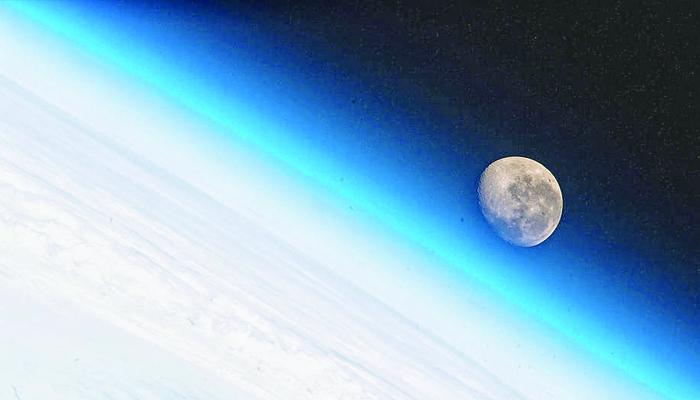
Muscat: People in Oman who are fascinated by engineering, astronomy and space have a great opportunity to spot the International Space Station (ISS) over the next few days, as it passes over Muscat.
The ISS has been passing over Oman since the evening of Friday, 4 February, and will continue to be visible for a few minutes every day through telescopes until about 7pm on Tuesday, 8 February.
On Tuesday evening, the ISS will appear over Muscat for a full five minutes, from 7:07pm. According to NASA, the station will appear 10 degrees above west-north-west and disappear 10 degrees above the southeast.
The station will return to the skies above Muscat at 6:07am on Monday, 14 February, for another five minutes. It will be positioned to the south, ten degrees above the horizon, before exiting the skies over the Omani capital, travelling in an east-northeast direction.
It will return again for a very brief period – just a minute – on Tuesday, at 5:21am, arriving 10 degrees above southeast, and depart ten degrees above east-northeast.
The ISS can be viewed for a longer period on Wednesday, 16 February, when it stays above Oman for a full seven minutes, starting at 6:06am.
It will enter the skies above Muscat 10 degrees above southwest, before departing the skies 10 degrees above northeast. The International Space Station can also be viewed from Thursday, 17 February to Saturday the 19th for varying periods.
On Thursday, space enthusiasts have full six minutes to spot the ISS above Oman, as it enters Muscat’s airspace at 5:19am, 15 degrees above south-southwest, before exiting 10 degrees above northeast. On Friday, it’s only going to be present for two minutes, starting at 4:34am.
It will, however, be back in the skies at 6:07am for another five minutes, entering 10 degrees above the west and departing 10 degrees above the northern direction of the horizon.
The ISS will also be over Oman for three minutes on Saturday at 5:22am. It will enter Muscat’s airspace 36 degrees above north-northwest, before leaving 10 degrees above north-northeast.
“All sightings will occur within a few hours before or after sunrise or sunset,” explained NASA. “This is the optimum viewing period as the sun reflects off the space station and contrasts against the darker sky.”